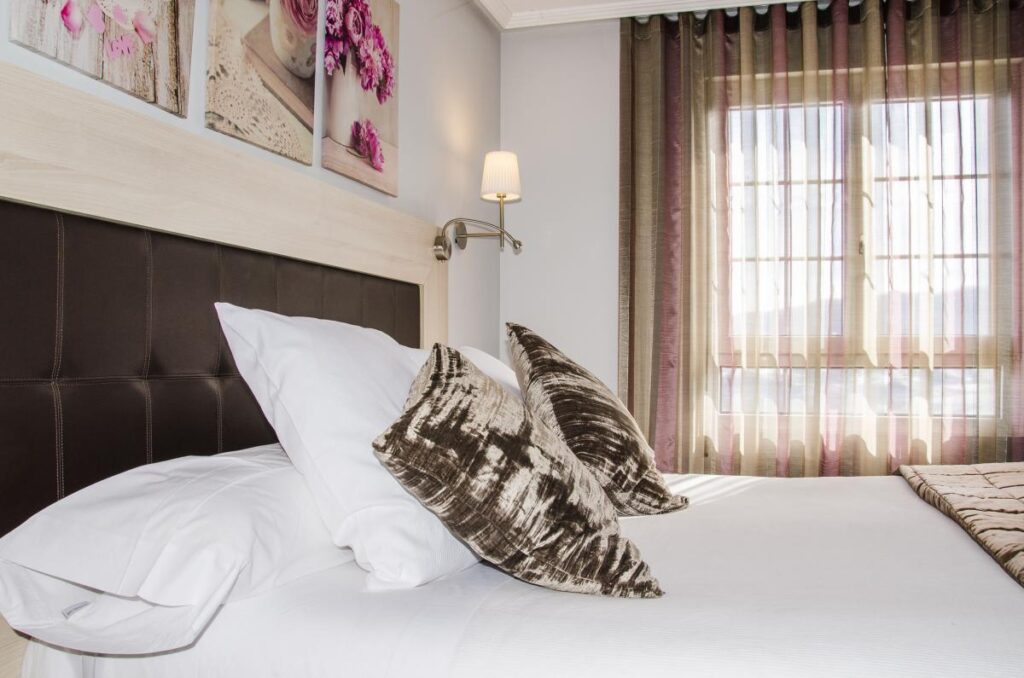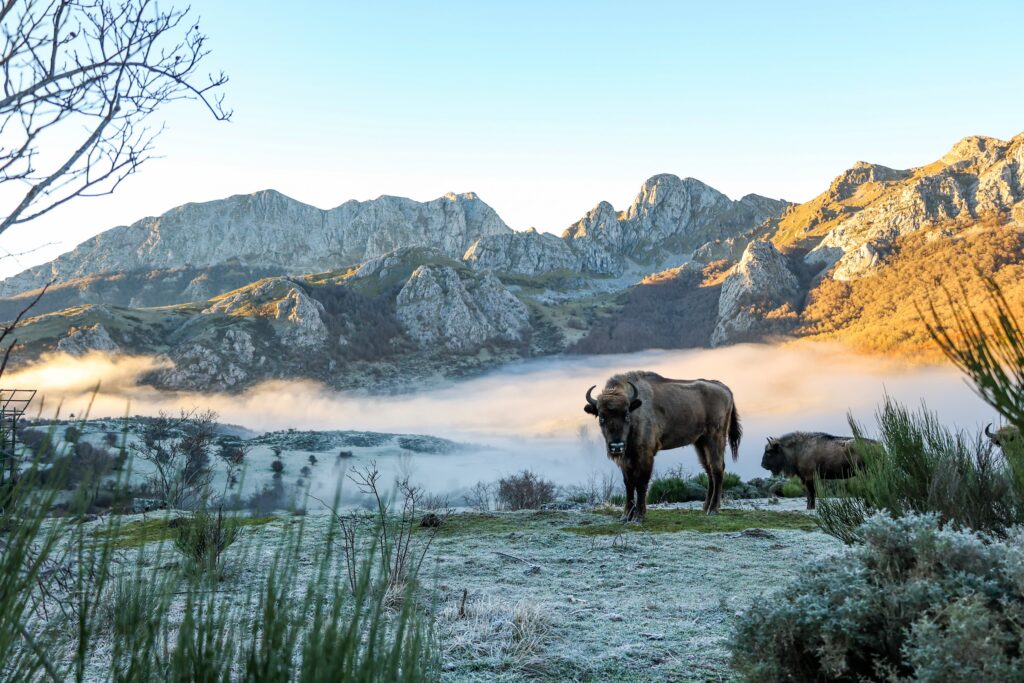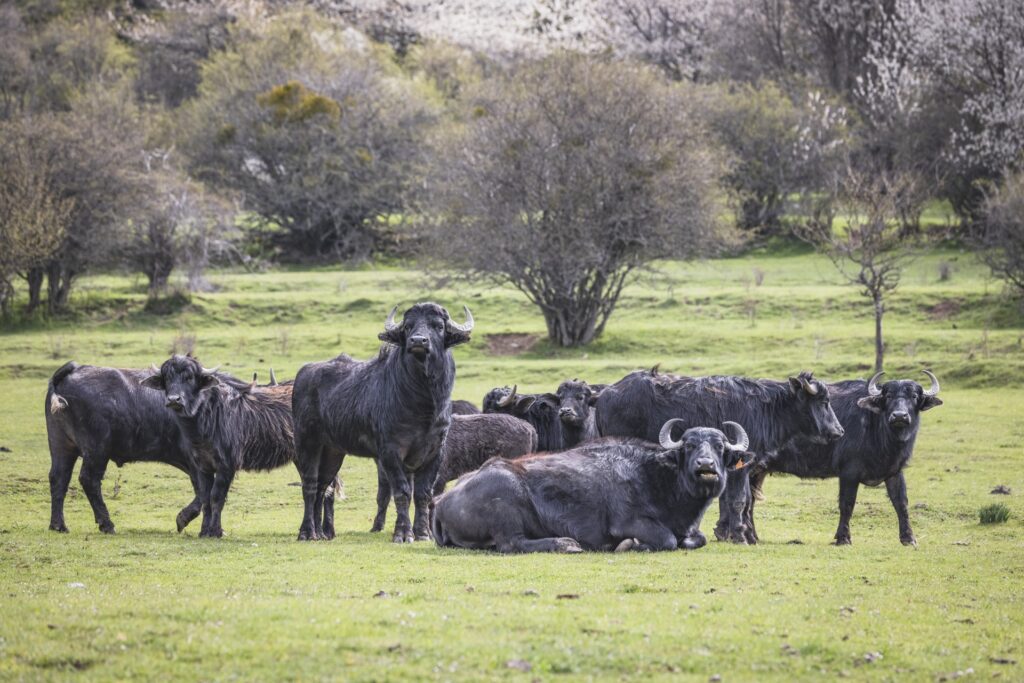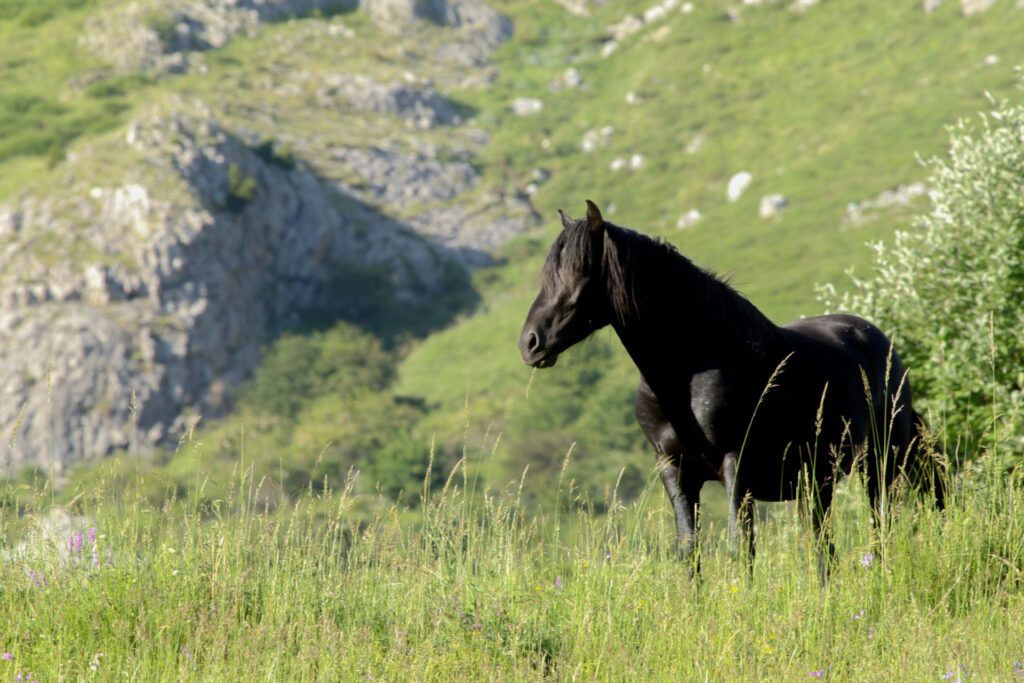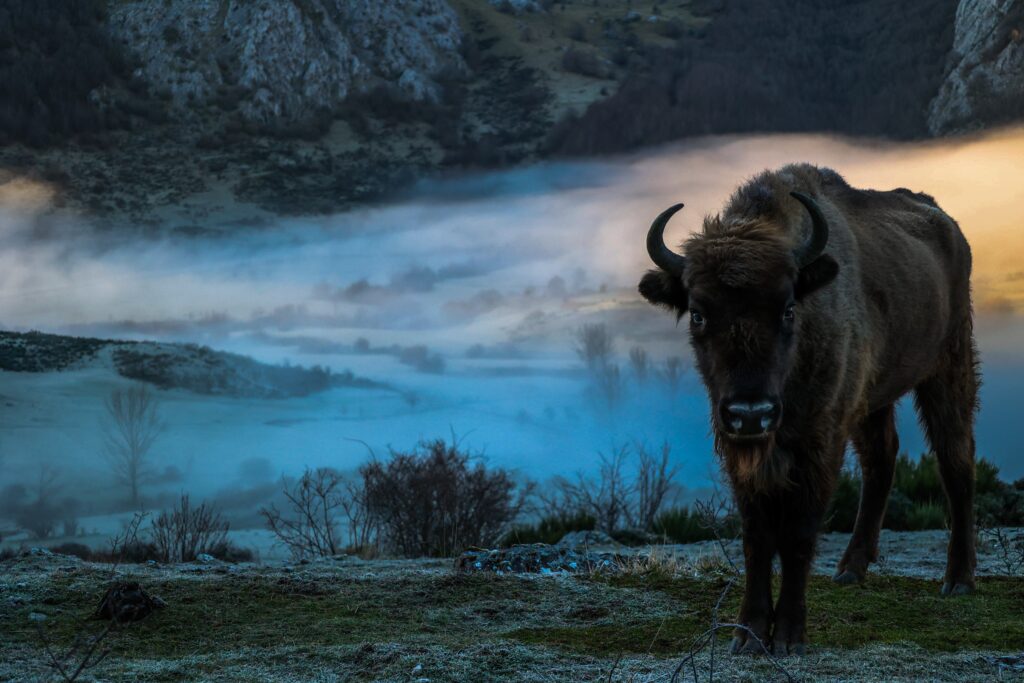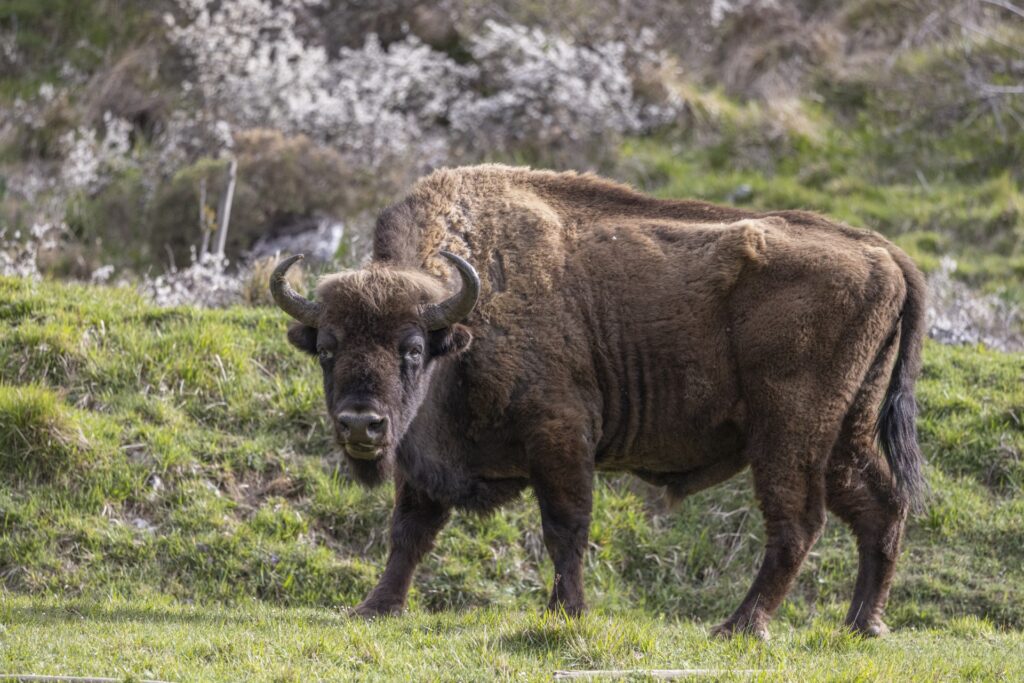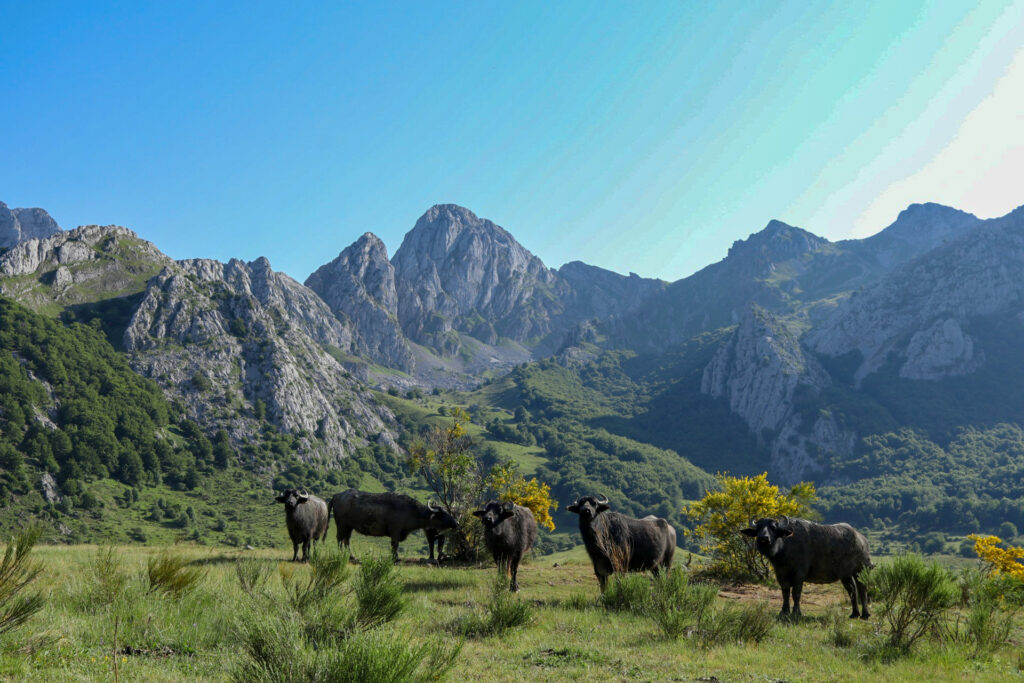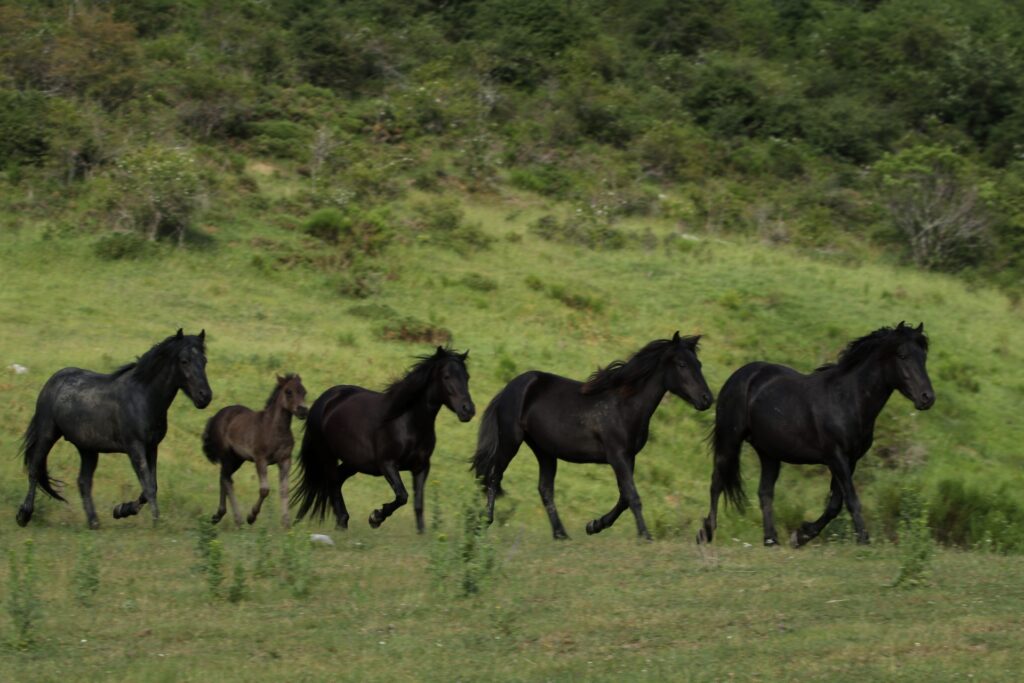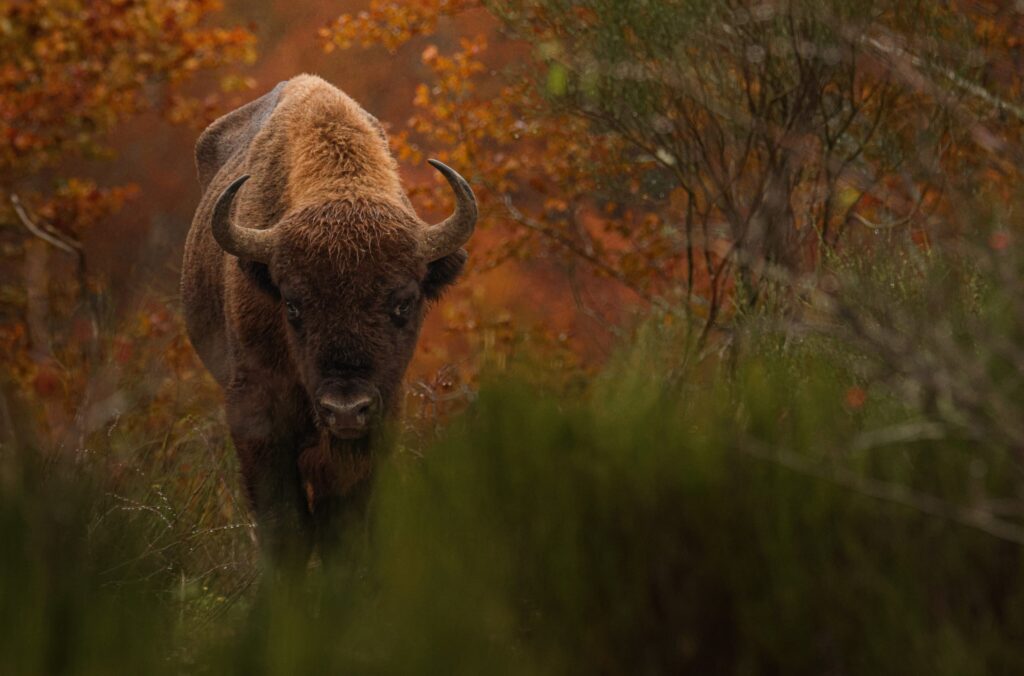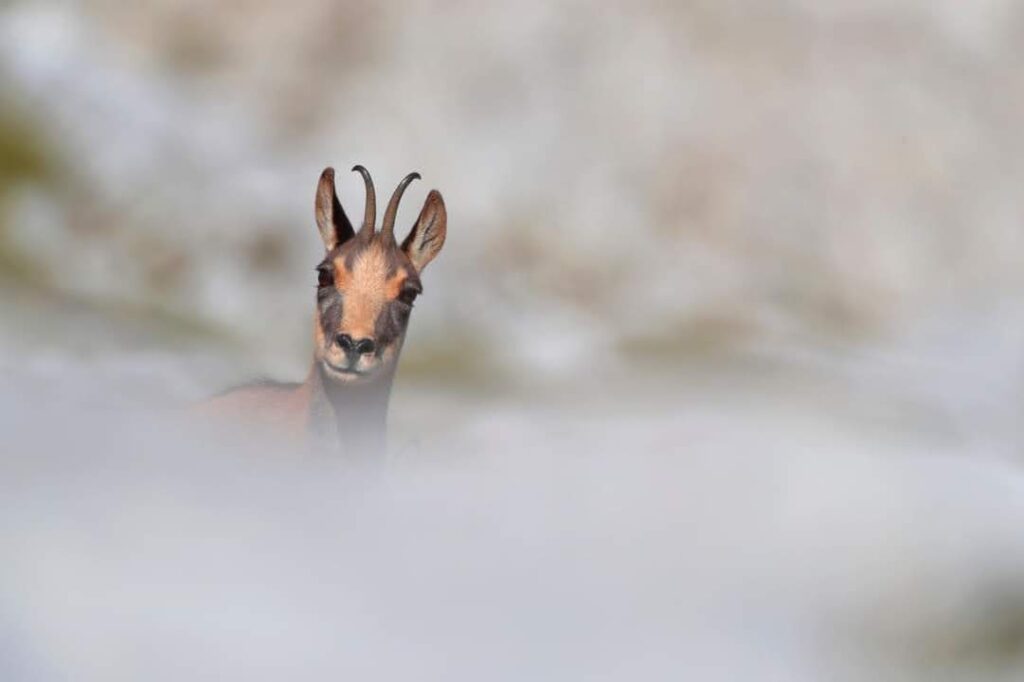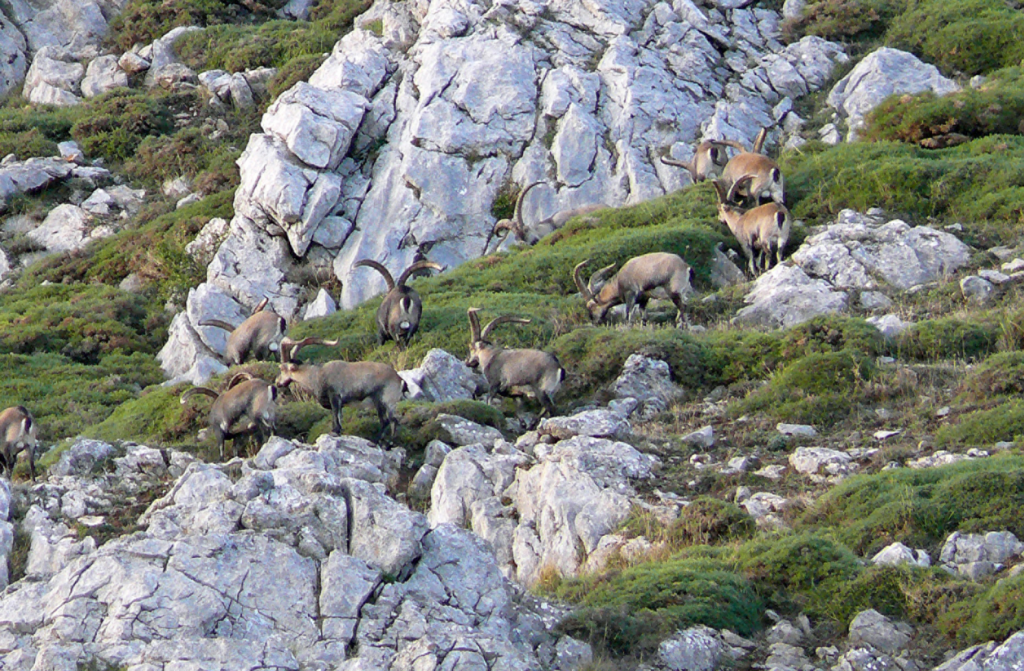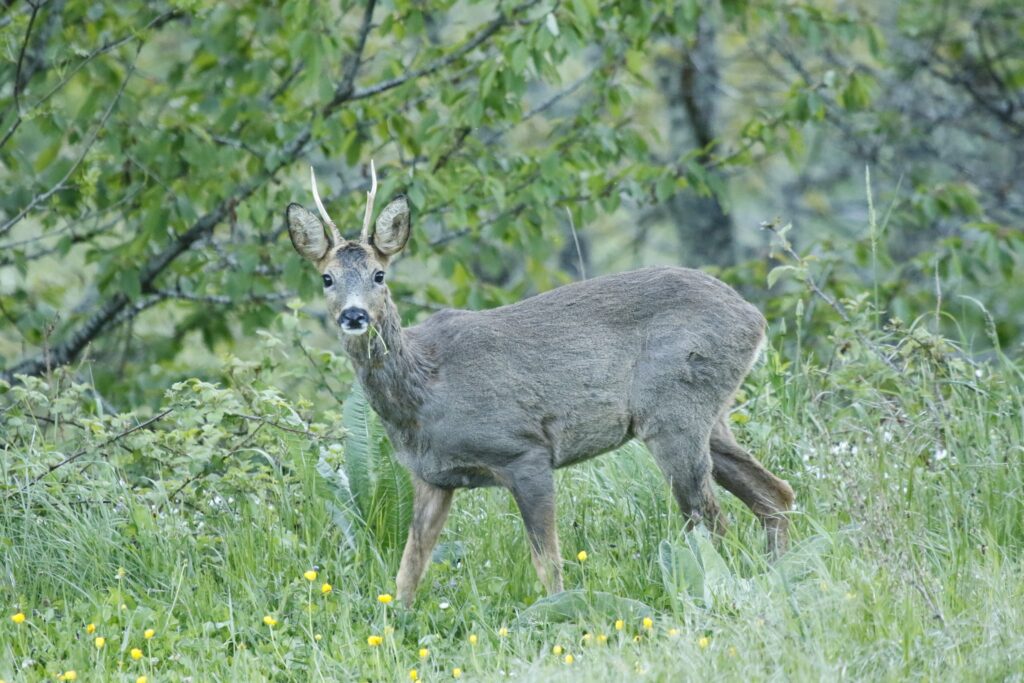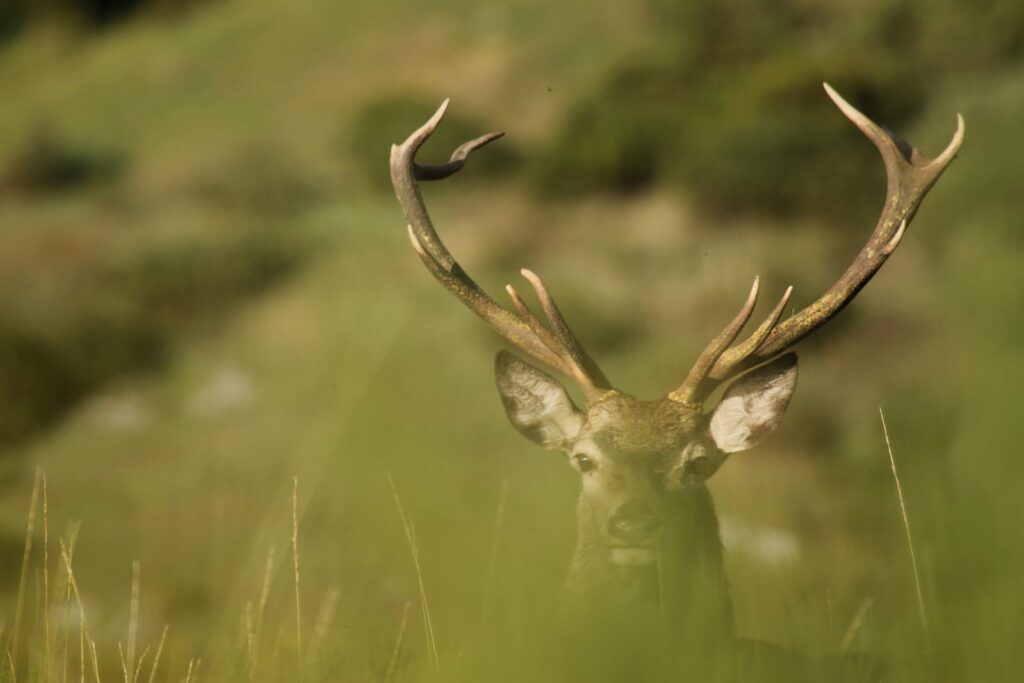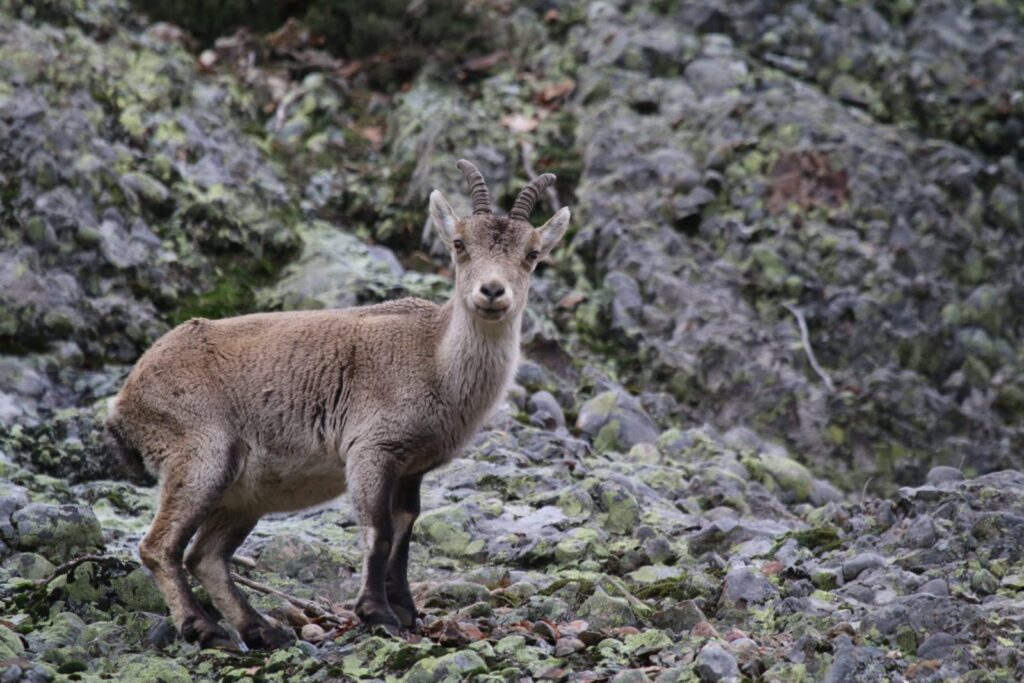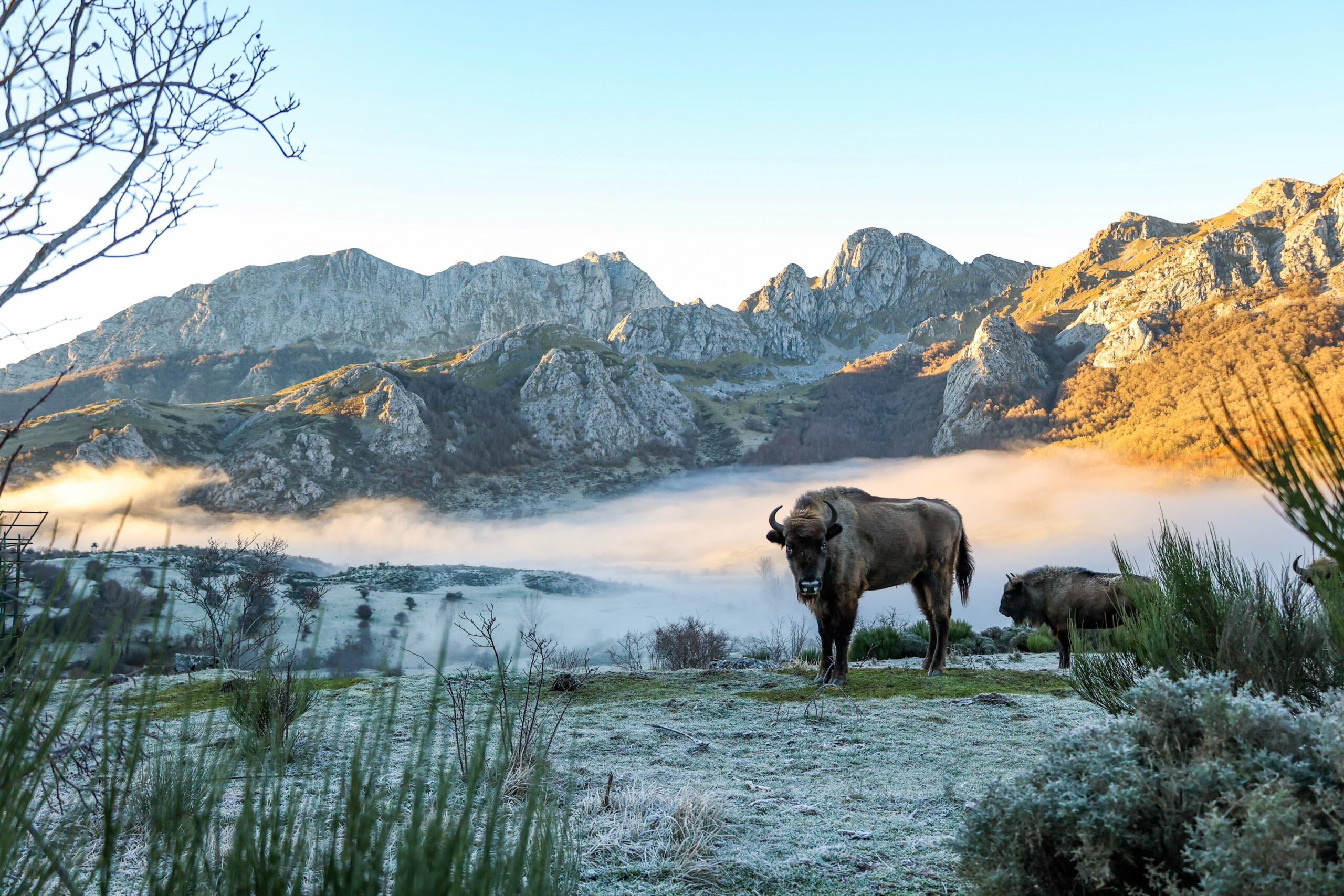ANCILES VALLEY
4WD wildlife safari
An inaccesible valley in the heart of Riaño Mountain range that guards and unmatched treasure
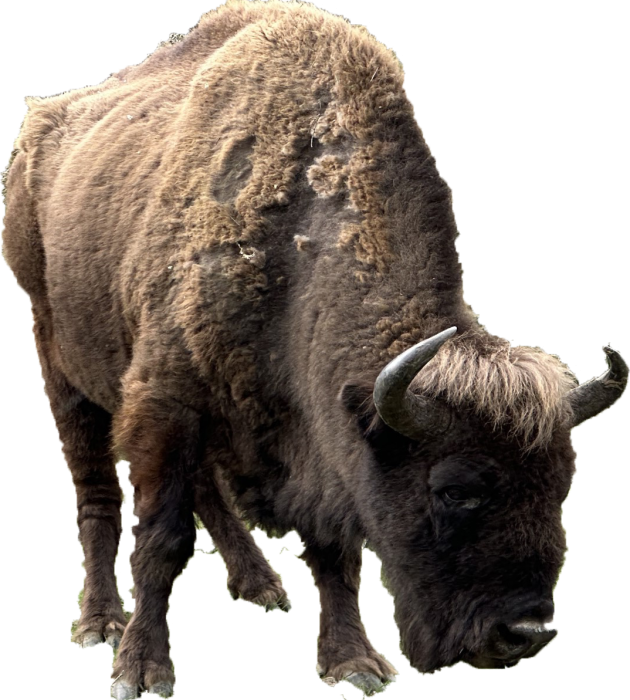
Temporada: All year
Seats: 4-6 seats per vehicle
Riaño, León
Rates: 65€ adults and 55€ childs.
Introduction
There was a time after the last glaciations and the disappearance of most of the european megafauna, that in Eurasia the current wild herbivores such as red deer, roe deer, chamois or iberian ibex coexisted with other already extinct species such as aurochs, wild horses, buffaloes and steppe bisons.
With them, large carnivores such as wolves, boreal lynxes and bears took advantage of the abundance of preys, and controlled their populations for a long period.
This ecosystem, similar to the one encountered by the first Europeans who lived in Europe in the Holocene, is currently recreated in the Anciles Valley in the heart of the Riaño Mountain Range.
Anciles offers one of the best observation and photography safaris that can be done today on the continent, due to its landscapes and the abundance of fauna found among the wild, rich calcareous areas of the valley.
The Anciles Valley is inaccessible, and is located between Pico Llerenes and the Cordal de Peña Cabeza and Peña Collada. It once had access by road, but the Riaño Reservoir in 1986 flooded the town of Anciles and left its valley isolated forever.
Today, it is only accessible by a long track that runs through the San Pelayo valley, at the foot of the majestic Yordas peak. This place, due to its beauty and rich pastures, has always been emblematic in the region for its abundance of wild fauna. All the wild ungulates from the Cantabrian mountain range are present, including chamois, iberian ibex, roe deer, red deer, and wild boar.
The iberian ibex is the subspecie Capra pyrenaica hispánica, occupying the ecological space of the Mueñu the ancestral Capra pyrenaica lusitánica, now extinct.
The valley is the usual range of the iberian wolf, the sighting of which is never ruled out, and its slopes are home to escuernacabras, hazelnuts and other fruits, taken advantage of by brown bears at different times of the year.
There are also possibilities of spotting wild cats, golden eagles, hares, otters and much more…
Furthermore, along with the wild fauna typical of this sector of the Cantabrian mountain range, we can find other species that live freely within the valley such as the pottokas, the water buffalo and the European bison.
Pottokas are a kind of pony typical of the Pyrenees, with characteristics and behavior very similar to those of the European wild horse or tarpan from which it comes.
In fact, it is believed that they have genetics very similar to these and are capable of living in the natural environment in herds without specific hierarchies with behavior similar to that of their extinct wild relatives.
The European Bison managed to avoid extinction thanks to the last specimens that survived at the beginning of the 20th century in some European zoos and conservation centers. They were reintroduced into the wild, first in the Bialowieza forest in Poland in 1923 and then in different reserves throughout the continent; It is estimated that there are about 4,000 specimens left. These specimens from Riaño are of the species Bison bonasus.
Lastly, water buffaloes are a Eurasian species, whose European subspecies Bubalus Murriensis lived in the Pleistocene in much of Europe. The current Riaño buffaloes come from the asian species.
.
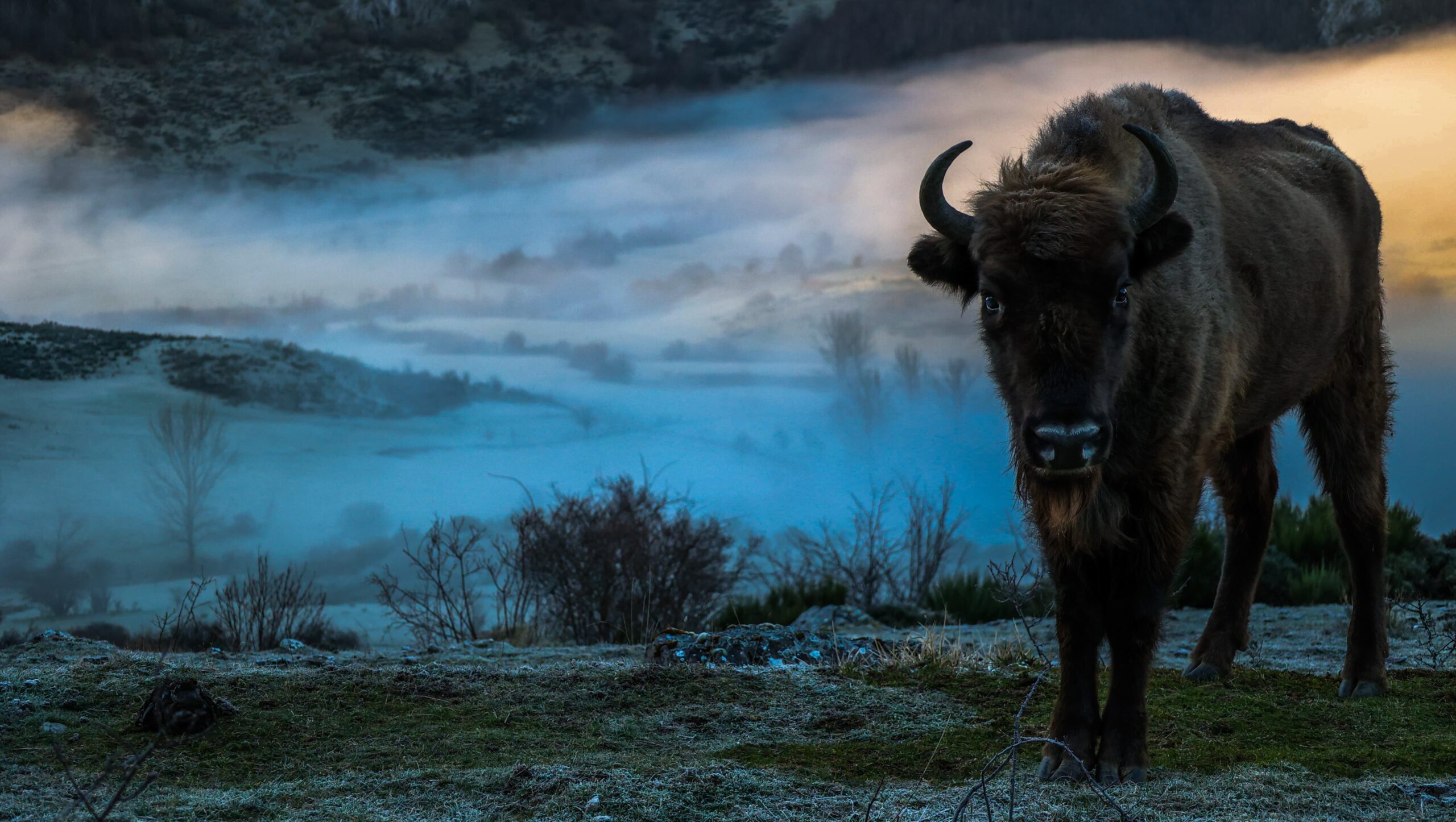
Rates
Price is 65€ per person and service.
55€ for child up to 14 years old.
Season and meeting points
The Anciles Valley can be visited all year round, except for the winter months when the entrance to the valley through the mountain pass may remain covered by the presence of snow on the trail.
The departures will be made from Riaño, with the meeting point being the WildWatchingSpain s.l office, located at C/Solasierra 8. Pick-ups can be made at the accommodations on the route to Anciles, such as those in Vegacerneja, Burón, Liegos or Lario.
Anciles valley location
The Anciles Valley is located in the heart of the Riaño Mountain and is accessible by boat from the Riaño pier or by track with 4WD vehicles. Access is restricted to protect the local wildlife.
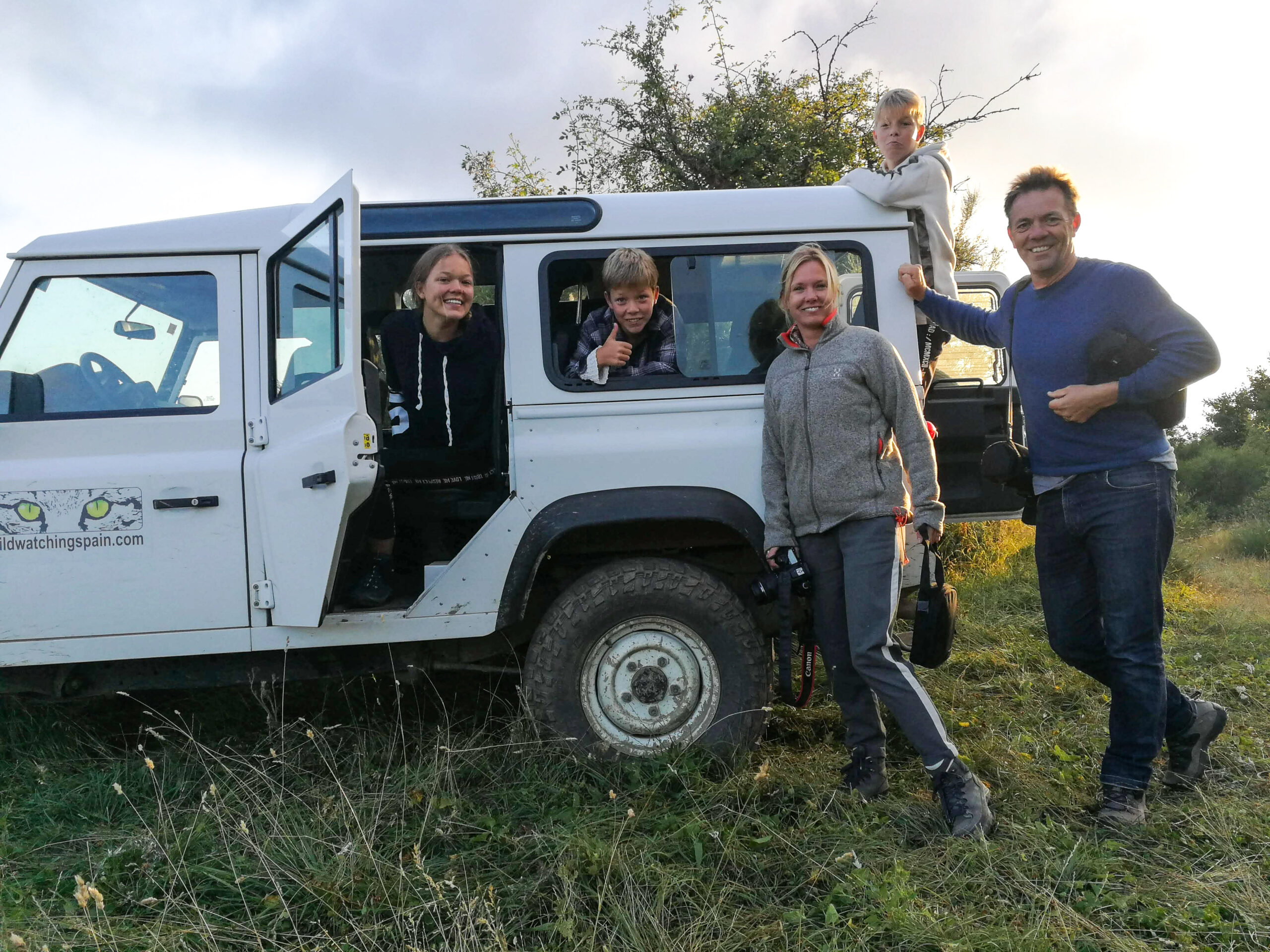
Accommodation
In the Montaña de Riaño there are different accommodation options, some economical such as campsites and hostels and others of higher quality such as hotels or rural houses.
We recommend some of them.
Good value for money accommodation: Hotel Presa, Hotel Tierra de la Reina, Hotel San Glorio, Hostal Saiz.
Cheap accommodation: The Portilla Hostel, the Maraña Hostel or the Riaño and Boca de Huergano campsites.
There is also a wide network of rural houses.
